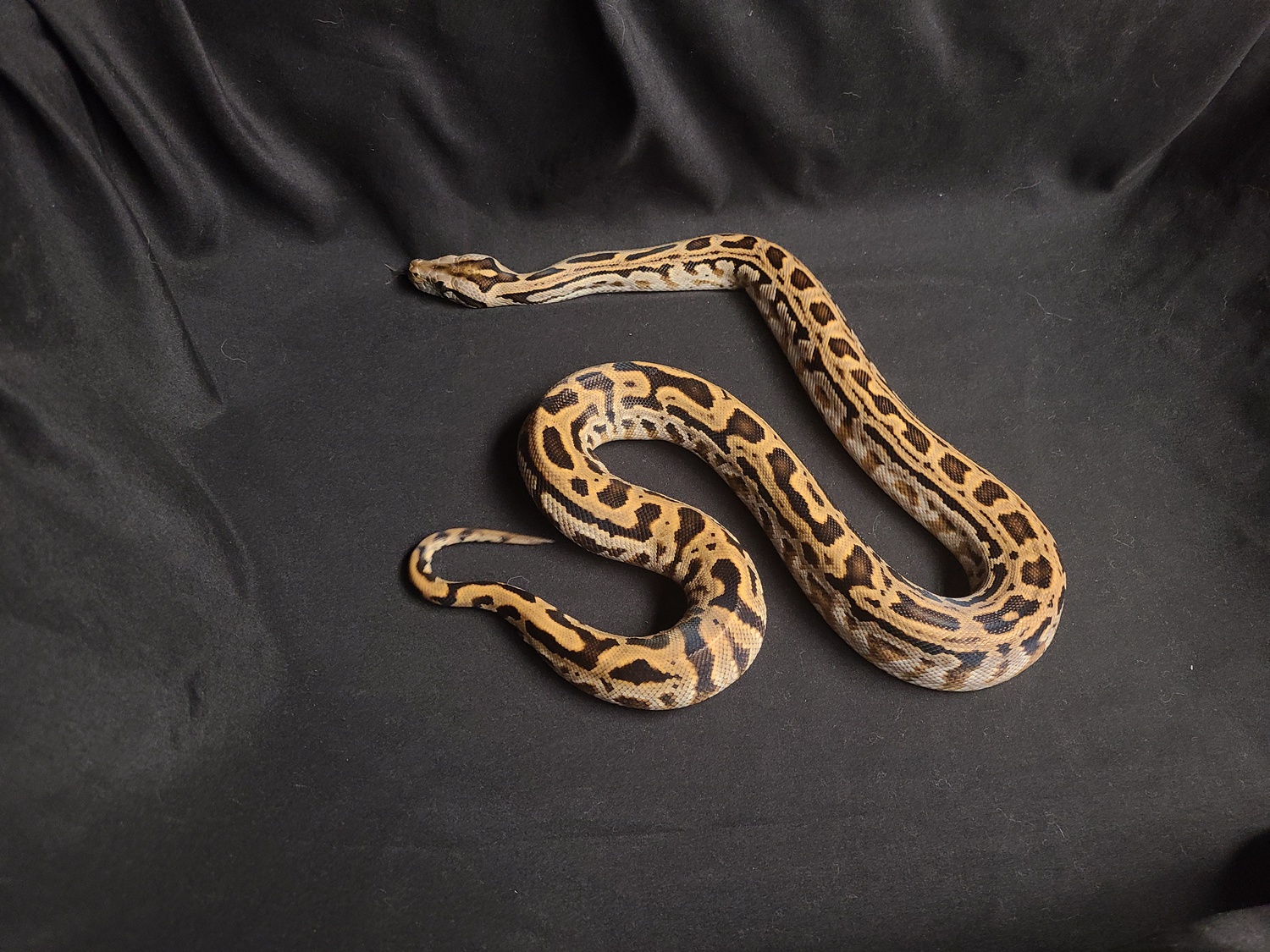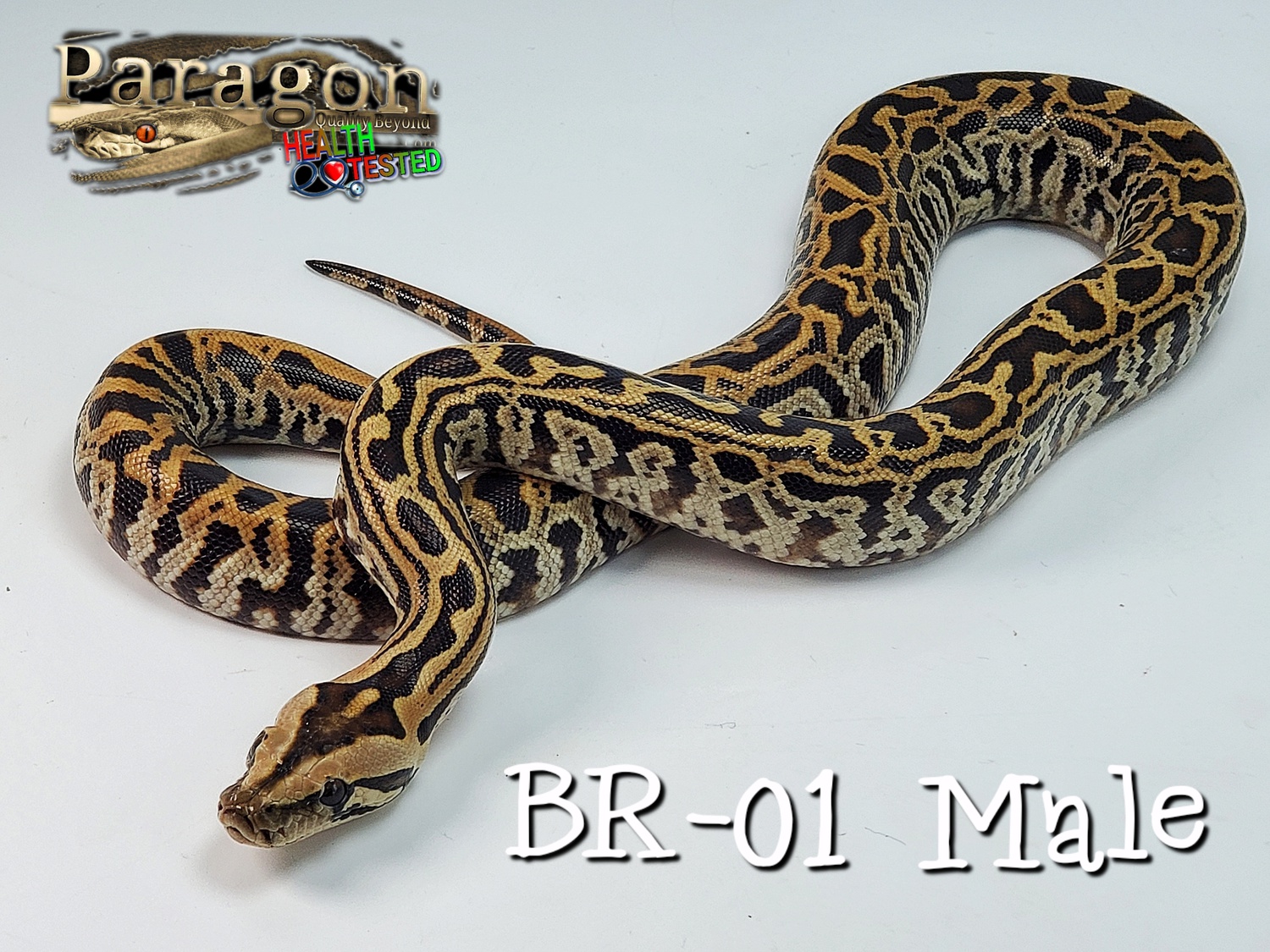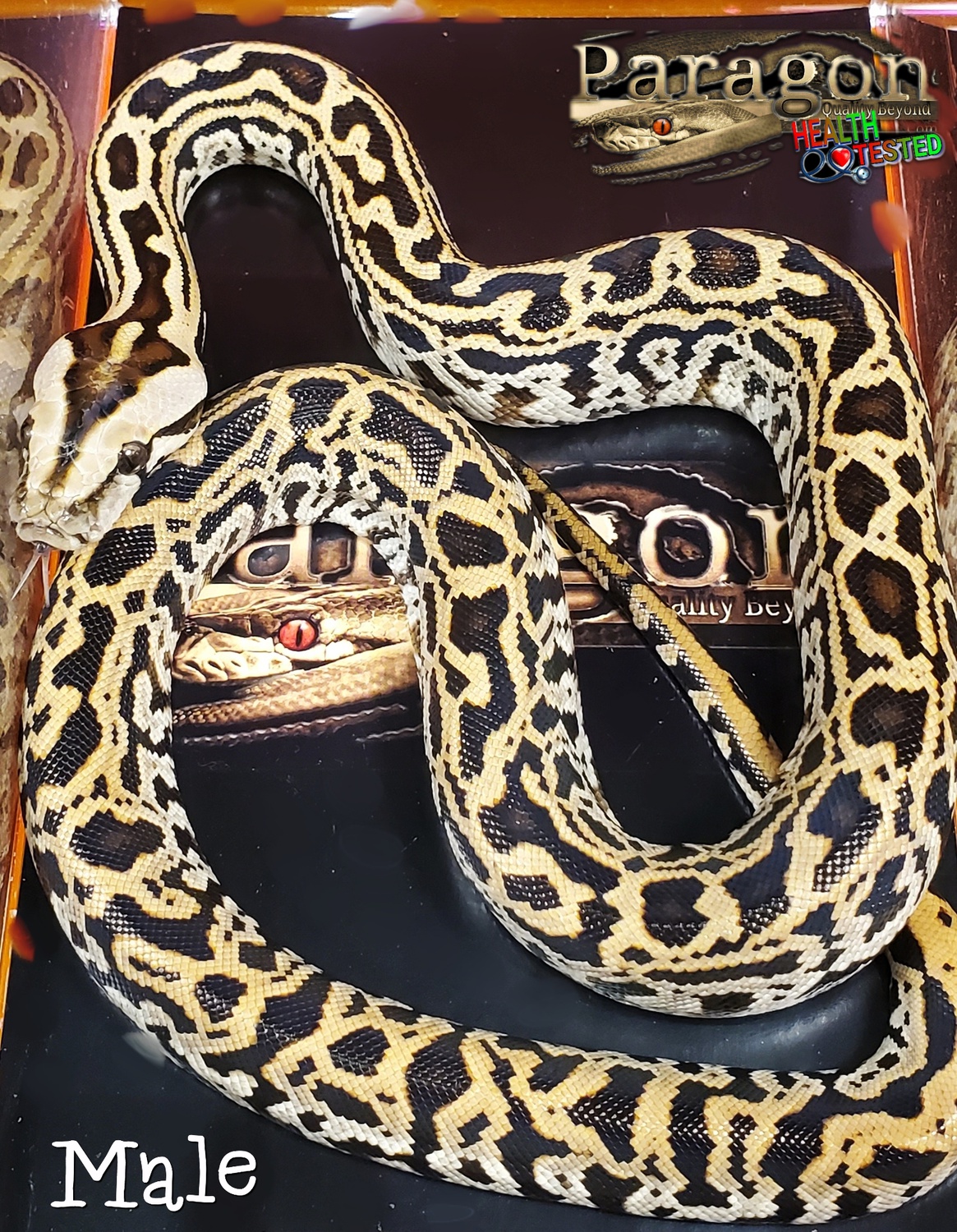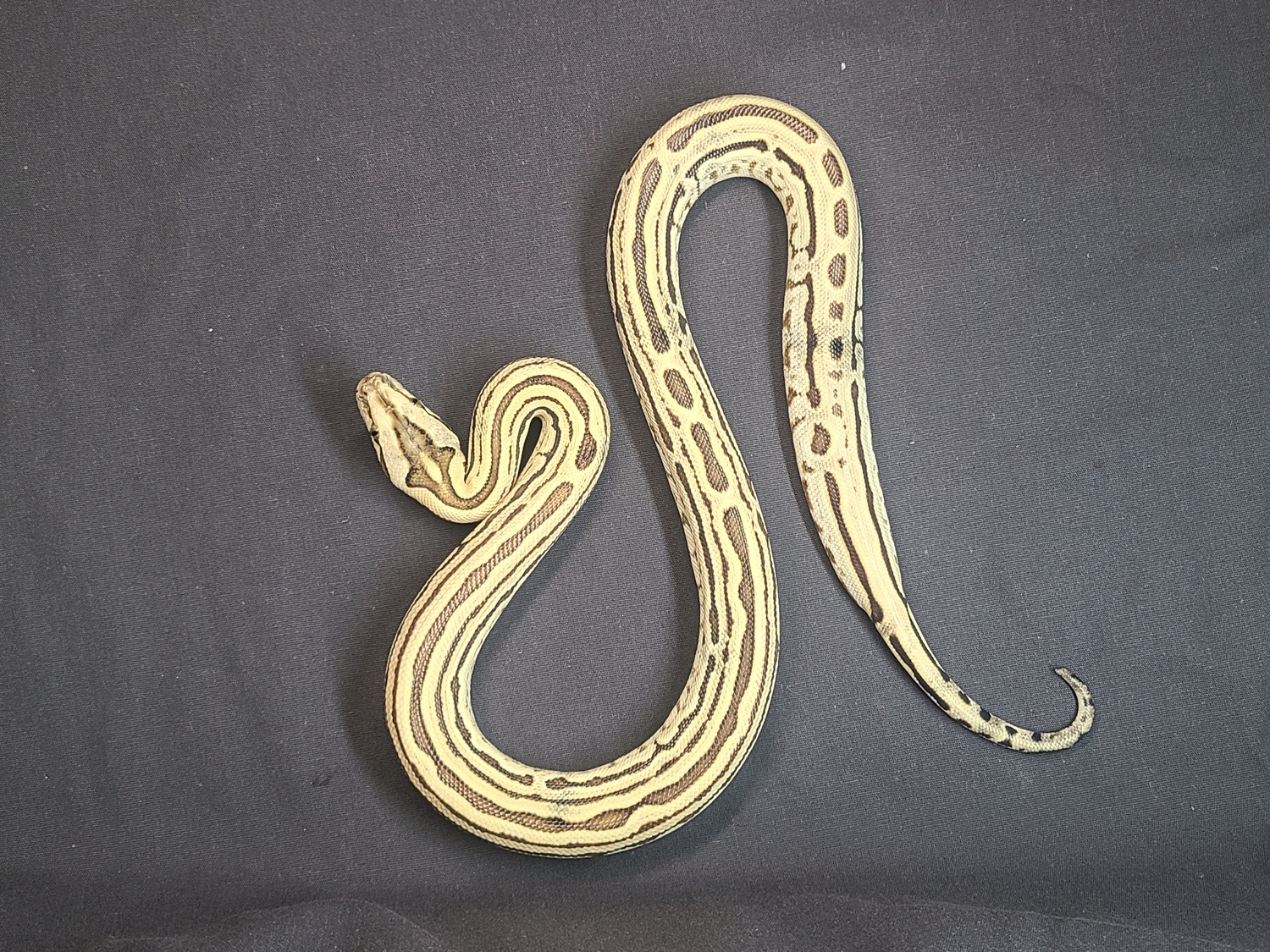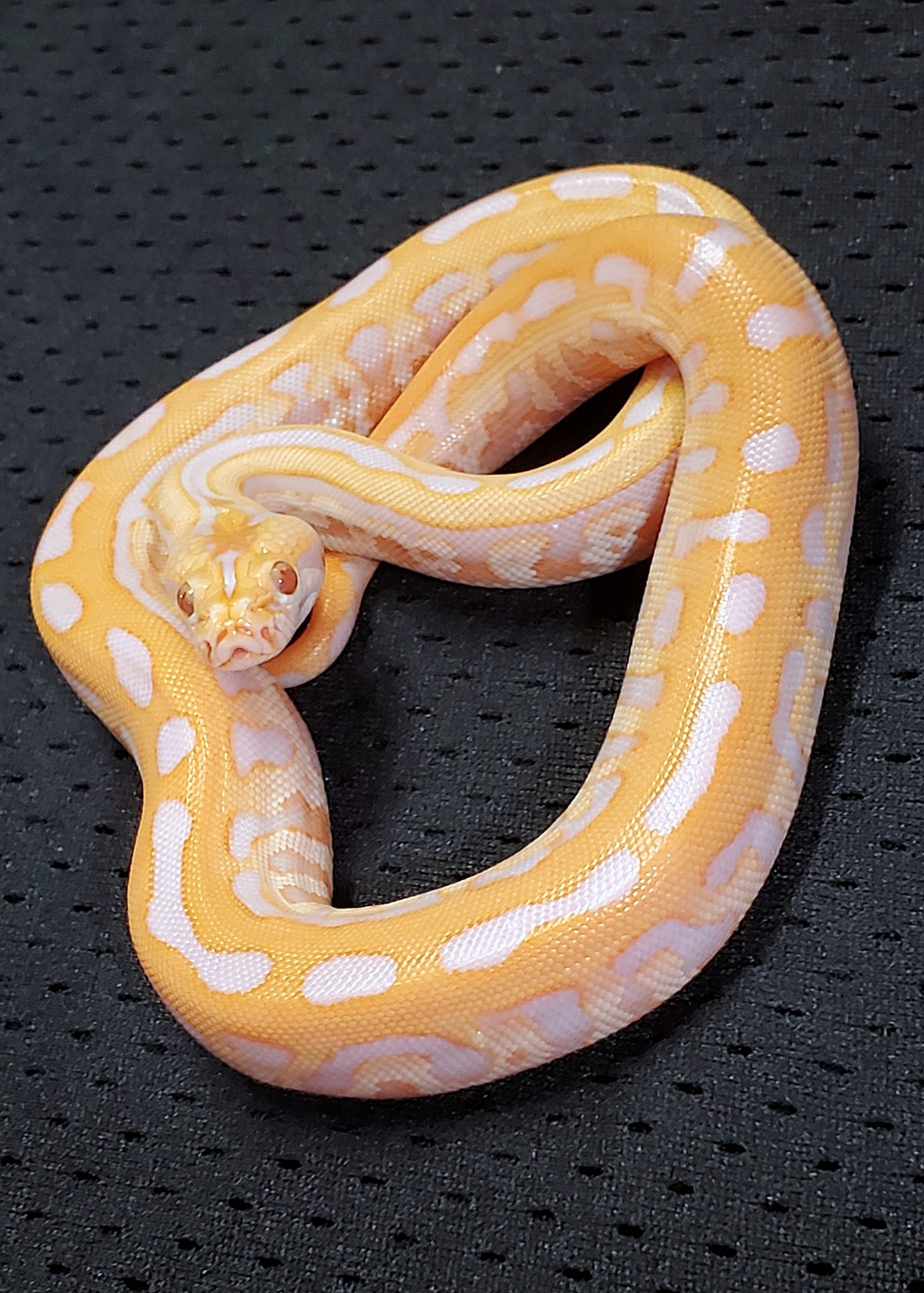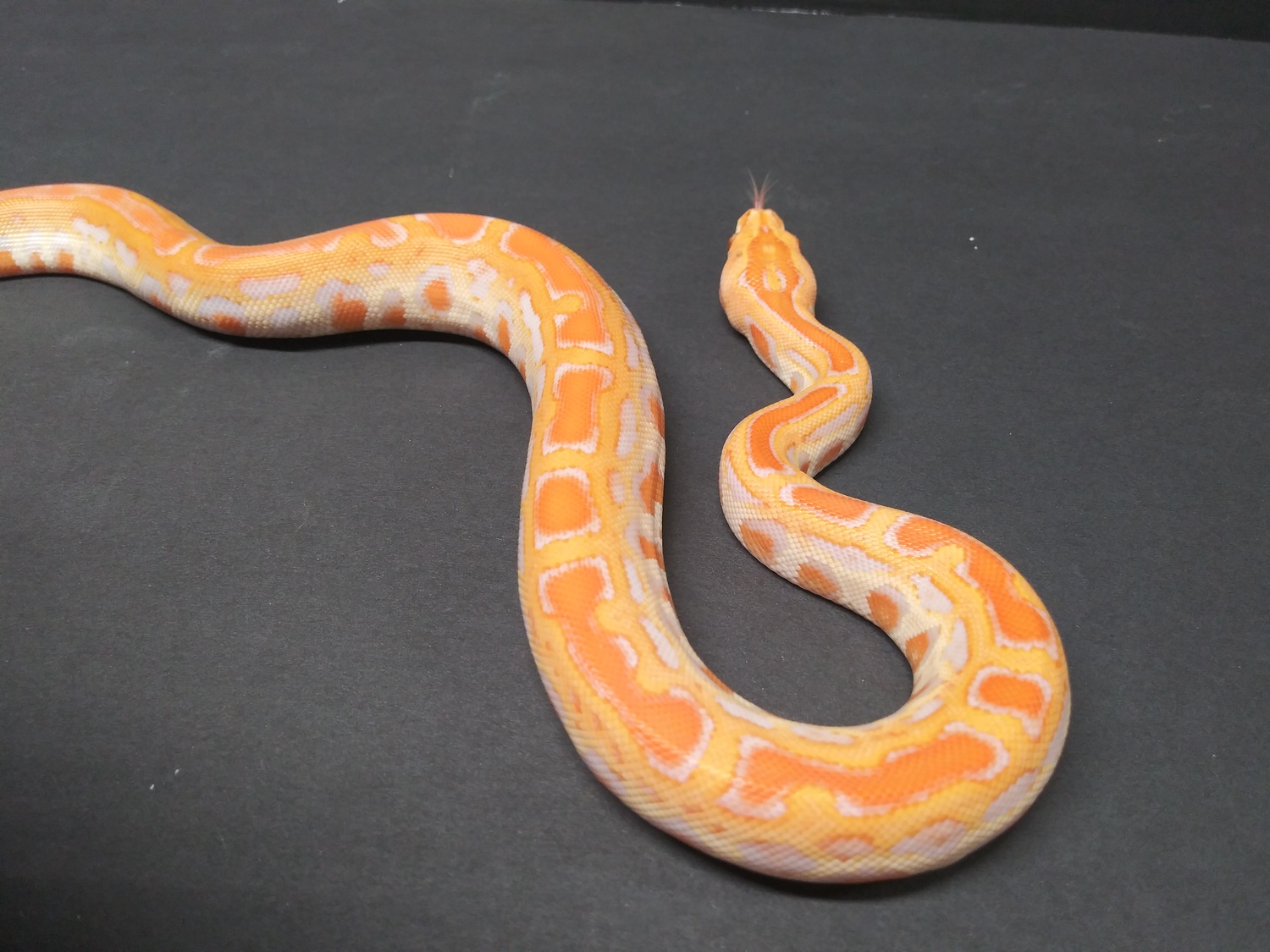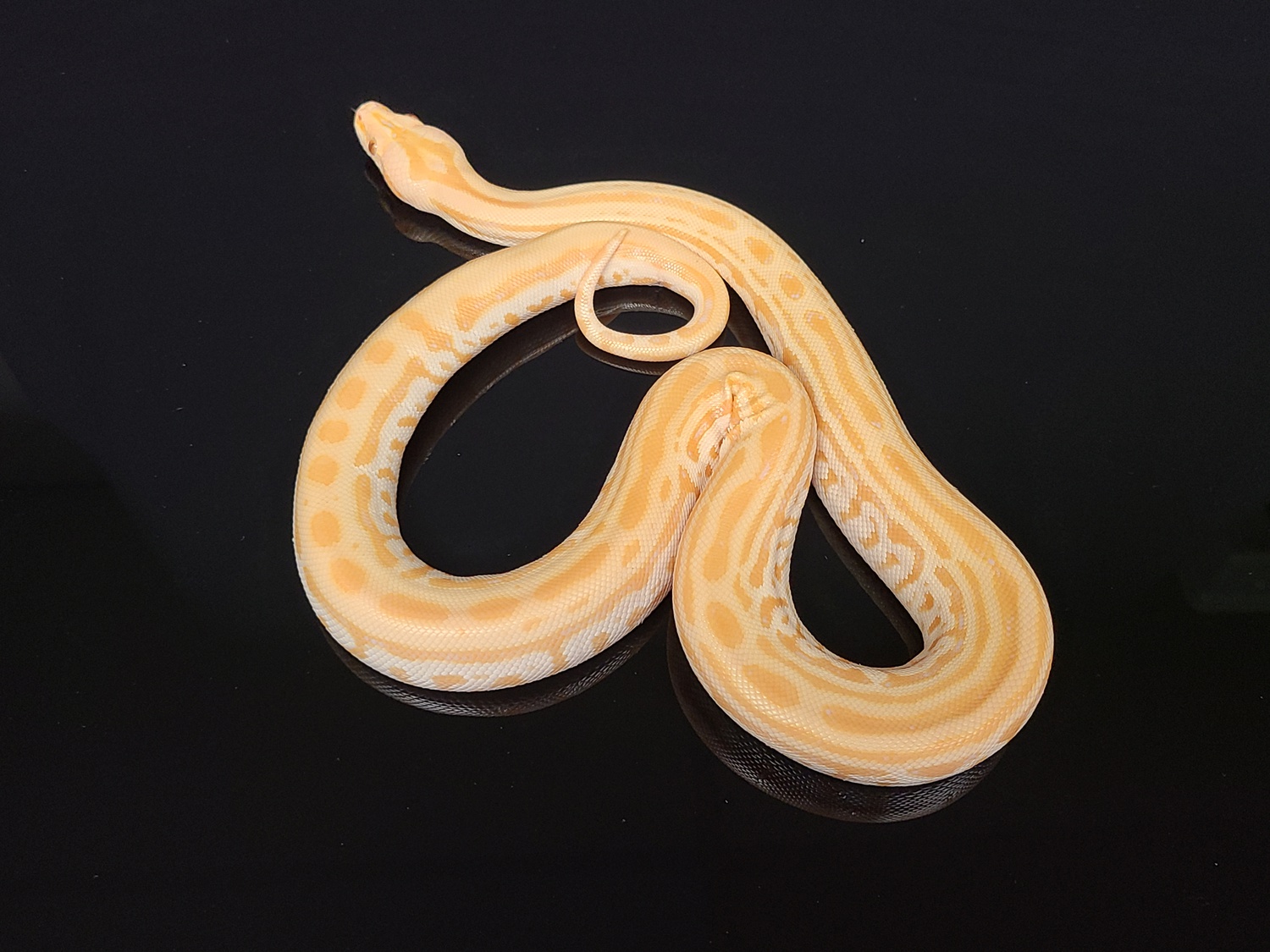Labyrinth
Type: Recessive
First Produced By: Bob Clark Reptiles
Issues: N/A
First Produced In: Unknown
Availability: Average
Last Updated: 2022-04-01
Do you have any suggestions or corrections for this article?
Click here to contribute feedback
About
Labyrinth is a recessive mutation.
History
In October of 1988, German reptile dealer Peter Hoch told me about two strangely patterned Burmese pythons that he had imported from Thailand a few years earlier, and had since sold. I expressed an interest in these snakes, and he agreed to try to locate them. He was successful, and a few months later, I received the snakes in Oklahoma. Fortunately, the two snakes were a sexual pair, and although they were just 7 feet long, they produced a small fertile clutch of eggs in early 1989. The hatchlings from this clutch were identical to their parents, with an intricate gold pattern on a black background. The phase was named “Labyrinth” after its chaotic mazelike pattern. Two additional wild-collected animals were added to the breeding group from the late Dave Lester of the Serpentarium in Walsall, England.
Appearance
Body
The patterning of a Labyrinth can vary extremely. Where the dorsal of a Normal Burmese Python is covered in rather predictable square patterning, the dorsal of a Labyrinth is completely random and seems to bring a second layer of vertical striping. In some individual animals, horizontal lines can be missing in large chunks leaving a clean black strip of the lack base color. In others the square patterning can be reduced in size and create a wobbly bubble like shapes that are free from any connection to lateral patterning.
Proven Lines
Clark line, Bell line.
Another Labyrinth Burmese python of wild origin was obtained by Mark Bell from a private collector in the United States. Mark produced the first Albino Labyrinth in 1993 by breeding the offspring of an Albino x Labyrinth cross. This is a striking form, where the black areas are replaced by bright white. These areas in the normal type of albinos are orange. The result is a high contrast gold and white snake.
Related Traits
No known related traits
